Thanks to preparing for a recent landscape workshop, it is fair to say landscapes have been on my mind a lot over the last couple of months. It is a genre I return to frequently, and I know is popular with others too. I thought it might be helpful to clarify my thoughts on why I love landscape scenes in art and maybe share some of the ways I’ve been enjoying working on this subject, along with a good few images, as usual.
In terms of go-tos when sketching outside, if you gave me an urban city scene vs a more natural landscape, I think I’d probably choose the latter. I have many sketchbooks with more rural scenes, views from hikes, and seascapes, but fewer city sketchbooks. I assume this is because urban sketching, realistically at least, is hard. There is so much information to translate- all the buildings and perspective, and often I get lost in straight and intersecting lines, versus the ease I feel with more organic curves and undulations in, say, a hilly countryside scene. At times, like many people, I feel better for getting out in nature. I appreciate how an evocative landscape painting can make me feel a certain way or remind me of a special scene.
As with abstract art, I have been on a bit of a winding meander over the years- I’ve tried realism, watercolours, gouache, acrylic, and I’ve also embraced mixed media landscapes too of late. It is pleasurable translating a scene in my own way- and as with abstracts, how I do this, the process, depends a lot on my mood. Some days I want the more predictable style and techniques that I have developed with gouache and pencil in my dedicated Moleskine sketchbooks. Even there I try to be expressive because I am aware I am not really interested in rendering a landscape exactly how it appears in a photo or plein air.- I want to have control over the lines and mark making, what I emphasize - draw the eye to, and the atmosphere I hope to evoke. I do love gouache for this type of art- the creaminess of the paint, the opaqueness and its forgiving nature means I can relax more into a painting- I get a little kick of excitement when you get a nice colour contrast, or that satisfaction in being able to paint light over dark or dark over light. It’s the small pleasures….
I have the achievement of building a personal collection of special places in my sketchbooks. Primarily, they are filled with scenes from local runs, hikes and travels. I have captured places that have significance for me. One of my favourite sketchbook spreads shows the view across the village green where my parents live in Essex. We moved there when I was around 15, so the number of times I’ve walked over that green, seen that view in all weathers and all moods is countless, and I feel I have captured it for myself.
In more recent years, I have been trying to get looser and more expressive. I have challenged myself to go Fauvist with colour, to play with mixed media techniques, draw landscapes from memory or even delve into my imagination, especially on top of work I muck up. I have had great fun in pushing pieces - often too far ( they will end up recycled or binned) - but it is not wasted time because how would I know when a landscape work is ‘overworked’ if I don’t take risks? The massive caveat here is ‘too far’ for me. I know that other people will have completely different judgments and artistic tastes in this area. In some ways, I’m a little reluctant to share process videos here as I can see they would be open to ‘Oh no, why did you do that?’ or ‘Are you sure that is finished?’. Someone asked the excellent question of how do I know when a landscape sketch is ‘finished’ - Answers anyone? I think I’m a little happier in this area because I have done a lot of landscape work in the past - I have experience in both scenarios, and I am getting to know what I like in a piece. If someone else has a differing opinion on my work, then it is an invitation for them to make a similar piece and finish it their own way.
Finally, here are a couple of ideas I go to when I’m feeling stuck or bored in this genre. If I am overwhelmed or procrastinating, I like to go back to basics and challenge myself to make a simple sketch with just one soft pencil. I also like to have a flip through books of other artists’ drawings- seeing someone else’s markmaking, or eclectic colour choices, can get me thinking about ways I could bring this style of working into my own sketchbooks. For sure, my abstract drawings and ‘doodles’ have also been coming into my landscape paintings and sketches- if a passage is too ‘boring’ for me, I know I can play about with dashes, stippling, squiggles, and then I might get a nice surprise visually. If I am out somewhere without my sketchbook or phone I try to take a visual snapshot of the scene in my memory and then translate it at home- this is really great for more intuitive or naive renditions of scenes because I can’t recall a lot of extraneous detail, my recall is so basic I may end up with my own imaginary concept.
Thanks for reading,
Best wishes,
Sonia







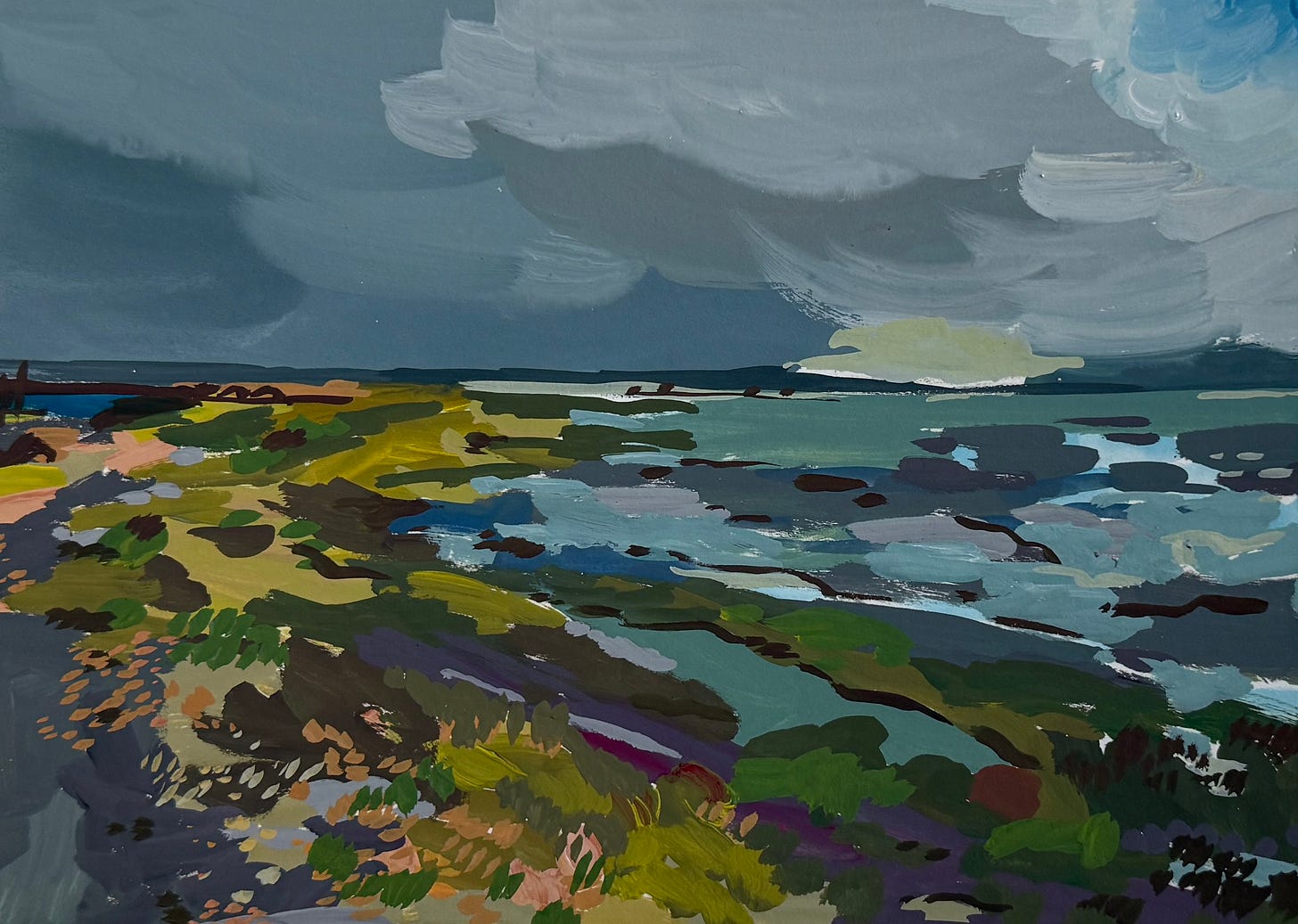
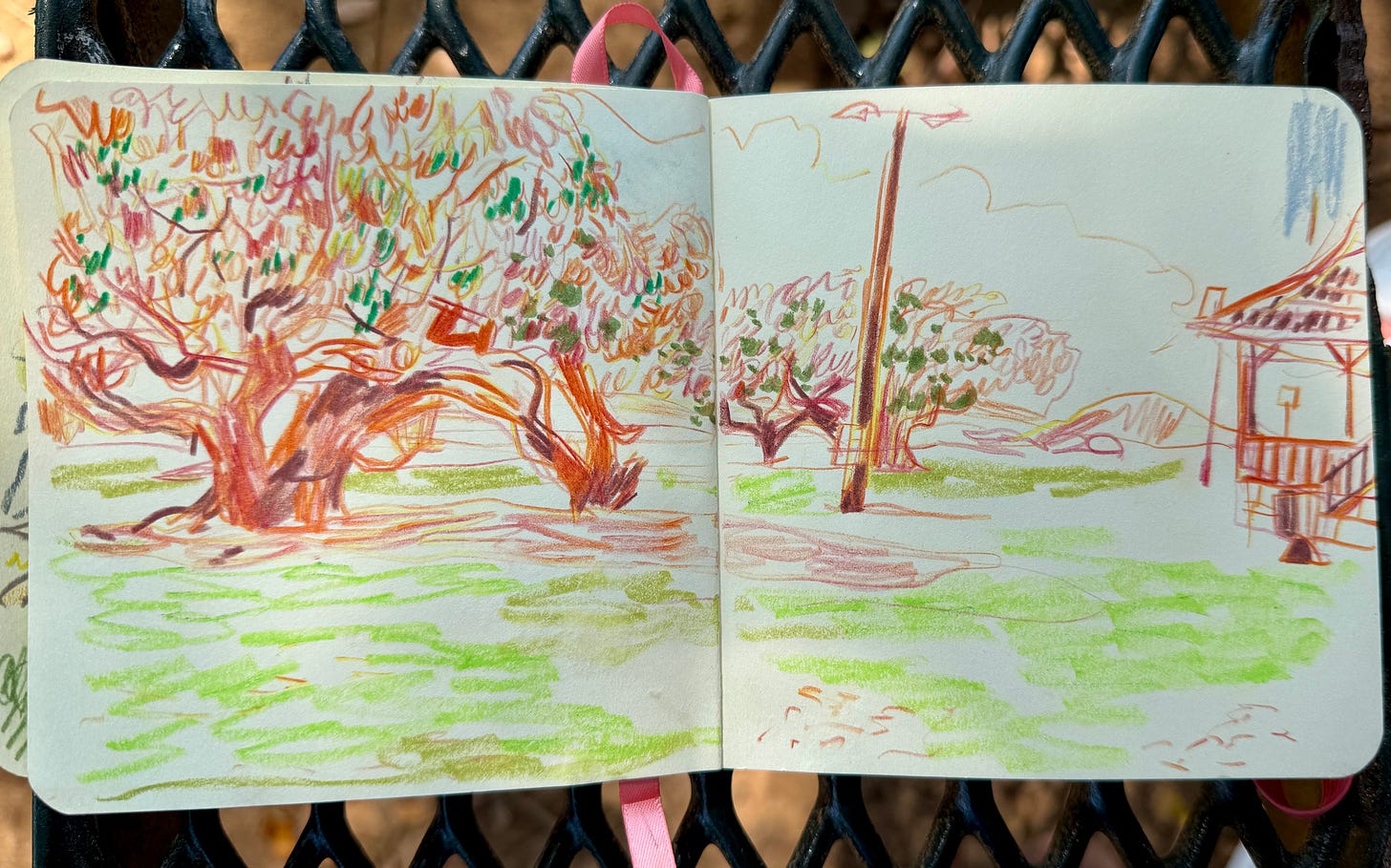
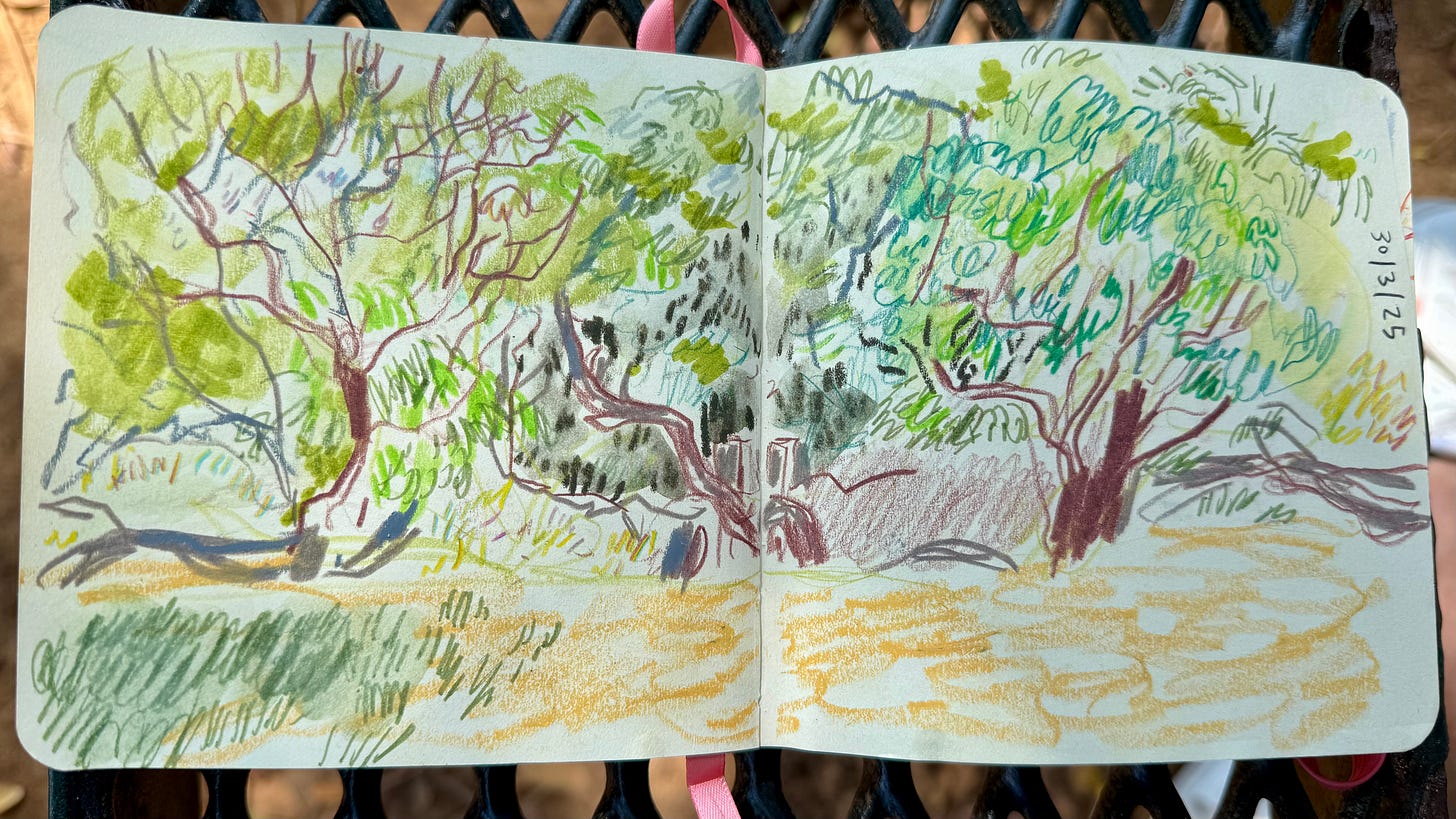
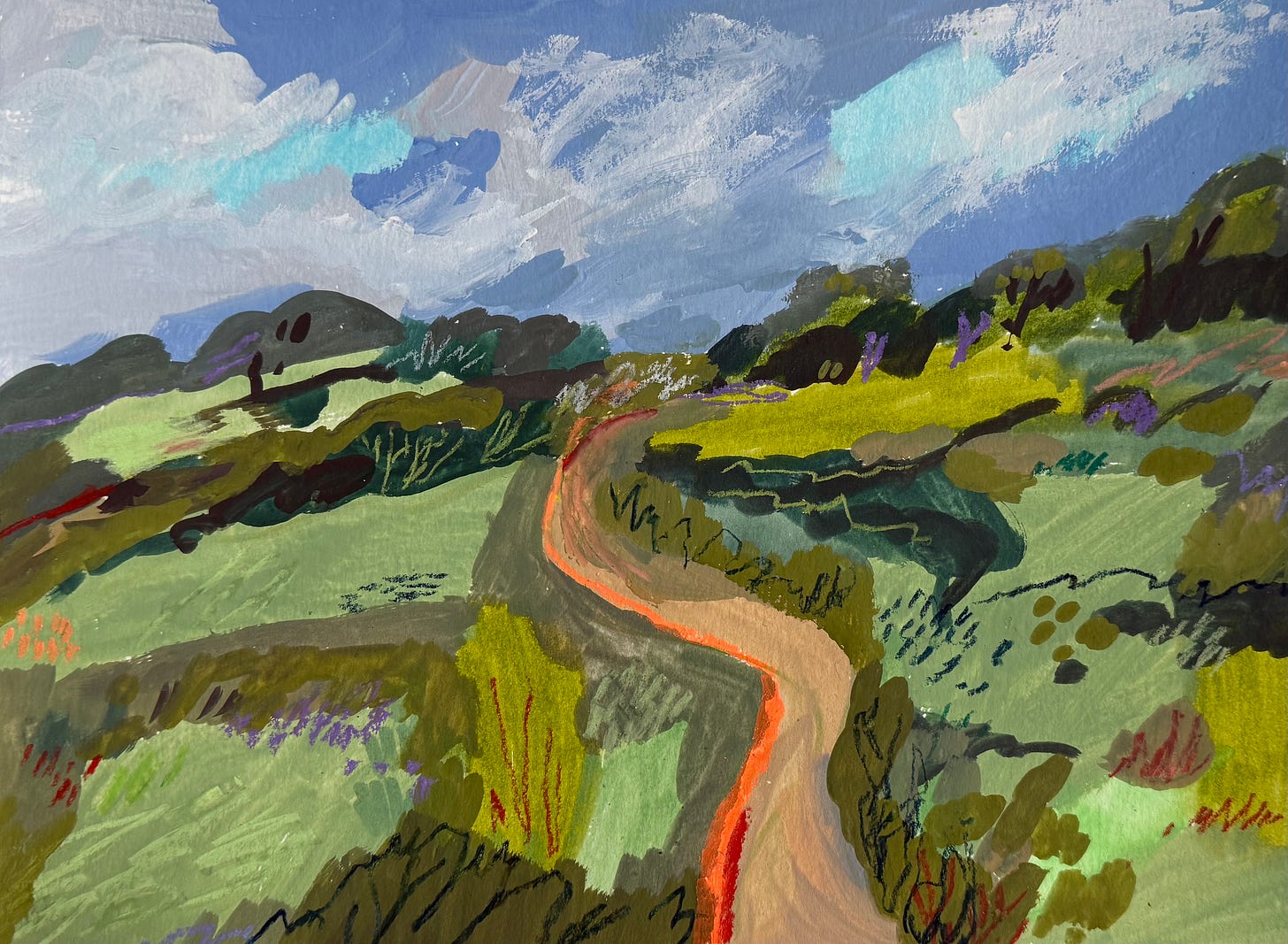

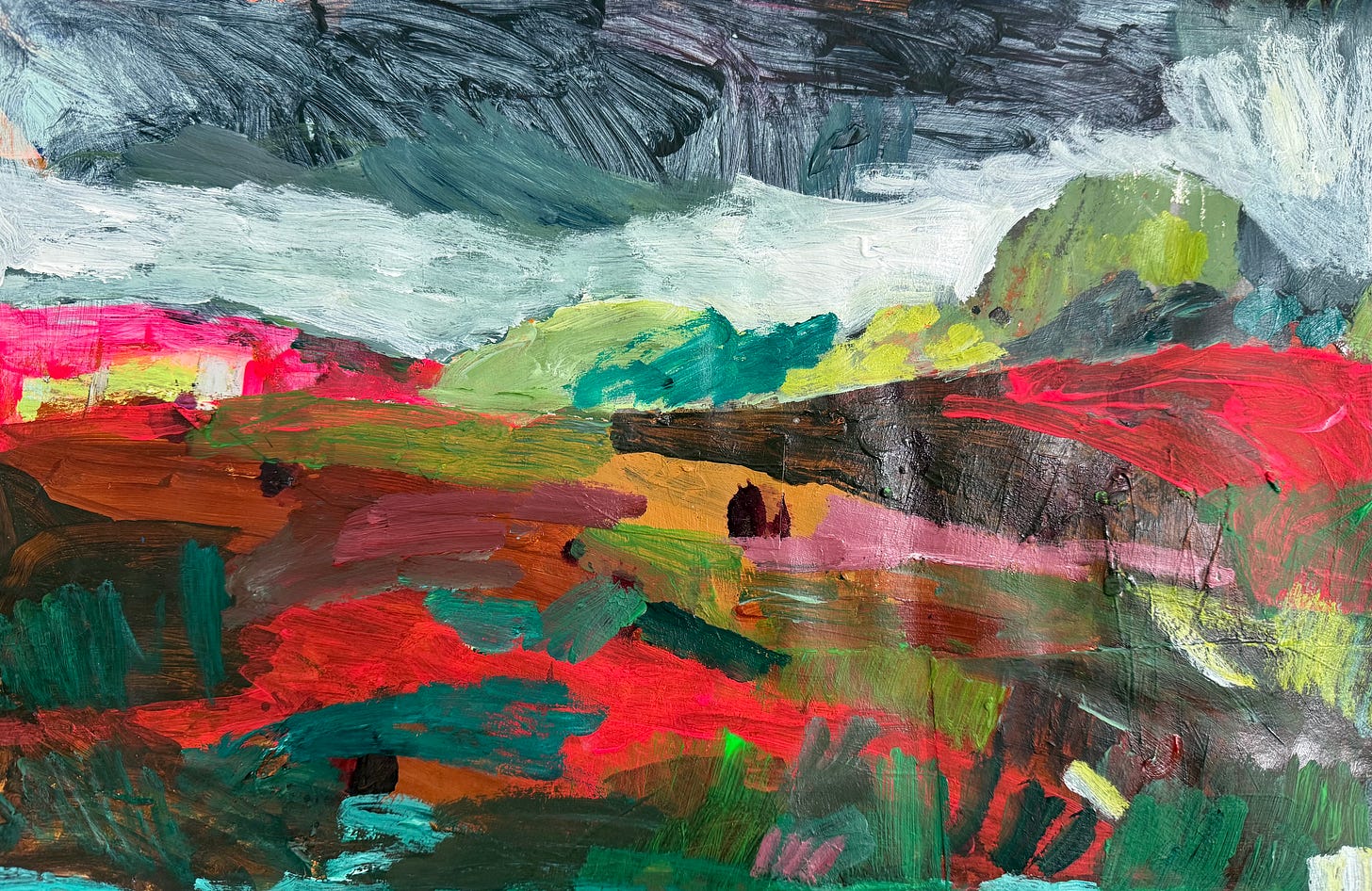
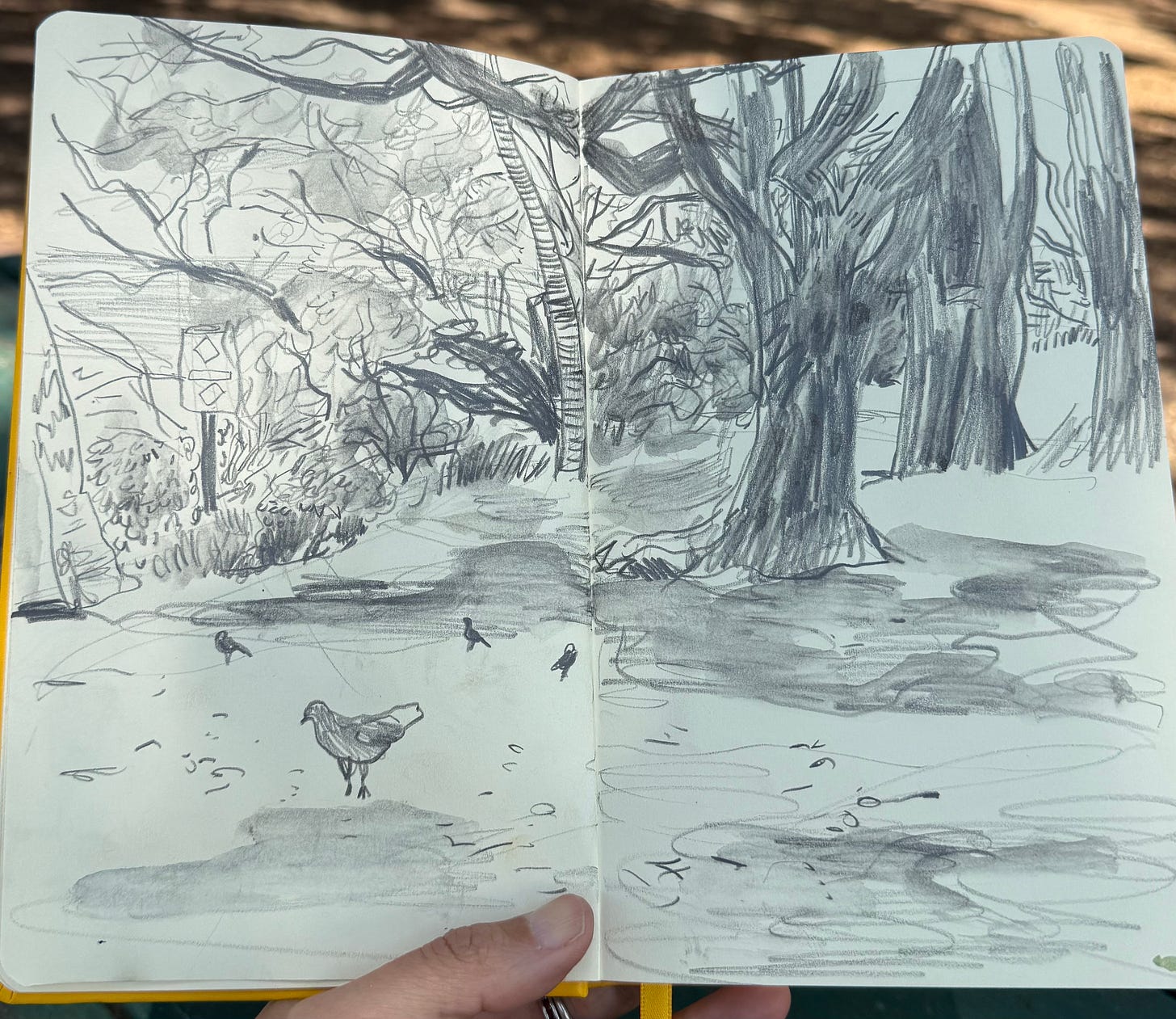
I found my self in many of your thoughts when I paint! I do mostly watercolor but I don’t like copying landscapes . My aim now is to invent them or to do them by memory. The results aren’t often satisfactory and I throw into the bin a lot of paper! Anyway…you’re right! This is not wasted time! ( I’m Italian, my English is not so good…)
A thoroughly enjoyable journey through your thoughts and landscapes.